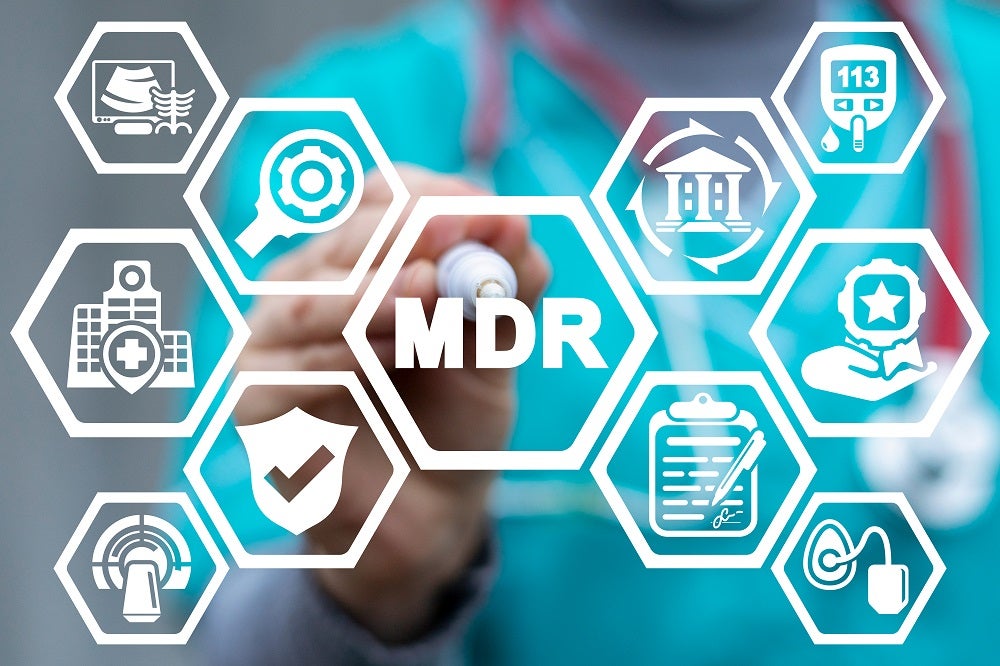
According to GlobalData’s products database, there are more than 19,000 active medical devices currently in the pipeline, with approximately 10% of these devices in the early stages of development. Each year large numbers of medical devices are developed, but only a few make it to the market.
Medical devices are subject to numerous laws, regulations, standards, and certification processes throughout every step of their development and production. Increasingly, medical device companies are buckling under market pressure when it comes to balancing quality with compliance, due largely in part to the ever-changing regulatory landscape.
The next few years will be particularly challenging for the global medical device industry as regulatory requirements undergo upheaval in Europe, Canada, and the US. In the EU, for example, the implementation of In Vitro Diagnostic Regulation (IVDR) has been especially tumultuous for medical device manufacturers, even without the complications that COVID-19 brought to doing business.
Fully applicable as of May this year, IVDR came into effect over a staggered five-year transitional period, and December’s vote to formalise its rollout has brought key changes to the way the sector operates.
While the worst may be over for European IVD manufacturers, the race to comply was just one of many for the entire medical device industry, creating a raft of challenges for businesses big and small.
Cost repercussions
According to GlobalData estimates, it takes between four and six years for a medical device to be approved, depending on where it is produced. The ability to navigate approval times and new legislations will be a key factor in the success of any new device to the market, especially as Europe’s new Medical Device Regulation (MDR) – which became applicable in the EU in May 2021 – requires significantly longer clinical research and certification processes before products are approved.
Much like IVDR, MDR changes have seen many companies struggle with the demands of the regulation. From updating IT systems and reassessing clinical trials for certain products, to the hiring of extra staff and increased investment in clinical development, the cost of implementing the MDR and IVDR has been a significant concern for European medical device manufacturers. As such, these regulations have been criticised for impeding industry innovation.
Despite these misgivings, the industry is expected to make a healthy recovery, as companies and agencies gradually adapt to the new regulatory landscape. And while GlobalData forecasts that these changes will negatively impact the number of pipeline products approved throughout the forecast period, the market looks set to continue with strong global growth. According to estimates, the volume of pipeline products reaching the market each year will continue to increase at a CAGR of 24.7%.
One step ahead
According to industry-leading provider of technical fabrics for medical devices Sefar AG, the challenge is to stay one step ahead of requirements. “Early consultation on regulatory and legal requirements, as well as an understanding of further processing and the product’s intended use, enable us to provide customers with optimum support,” says Lorenz Schmid, Sefar’s medical project manager. “We also make the necessary documents available to the customer in good time as part of the overall documentation approval process.
“If the customer cannot approve a product due to regulatory requirements, the results can be profound, including additional expenses in the form of a product redesign or, if necessary, no marketable product at all. We endeavour to clarify such risks with the customer at an early stage and take appropriate steps to mitigate that risk.”
As a leading European manufacturer of precision medical fabrics, Sefar provides a superior manufacturing process, global distribution system, and fully compliant products and processes to help ensure full conformity with the latest medical device regulations.
The use of medical fabrics typically made of monofilament yarn polyester (PET) and polyamide (PA), for example, requires a special production process in order to meet global biocompatibility requirements. The materials are mostly utilised for medical filtration and diagnostic applications, and as such, they must pass all relevant biocompatibility tests of USP Class VI and ISO 10993.
In addition, certified tests must prove that these fabrics are non-cytotoxic, non-hemolytic, non-pyrogenic, and show no sensitisation. The production process is then certified according to ISO 13485 to ensure process validity for the device manufacturer.
According to Schmid: “Sefar endeavours to accompany and support customers as best as possible when it comes to regulatory requirements. It is in our interest to provide customers with compliant products that are suitable for their intended purpose.”
To find out more about how Sefar’s innovative product line overcomes biocompatibility challenges while maintaining compliance with the necessary standards and regulations, download the whitepaper below.


